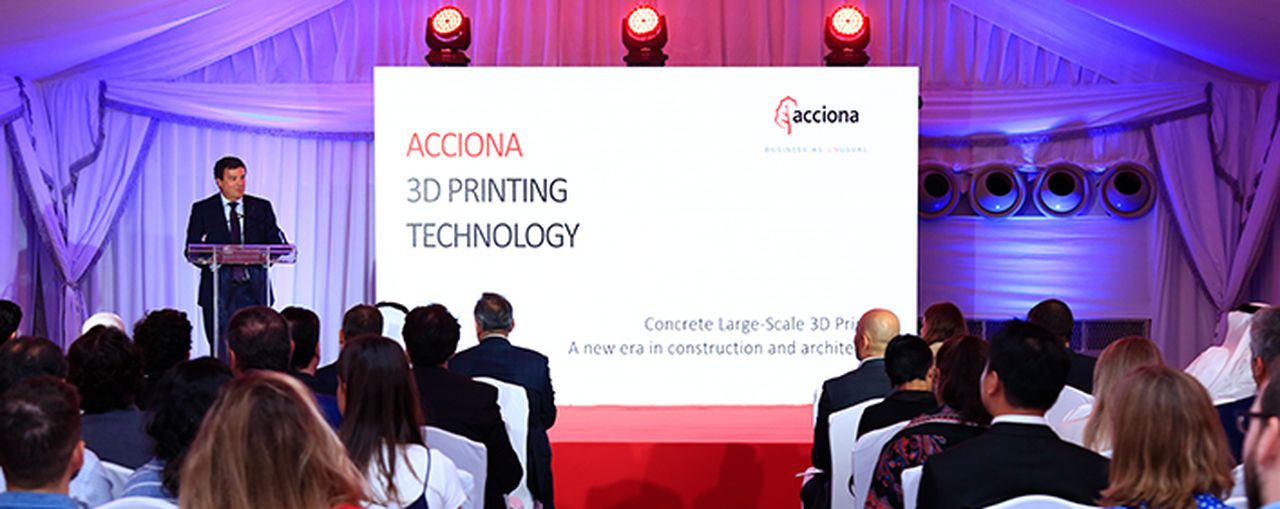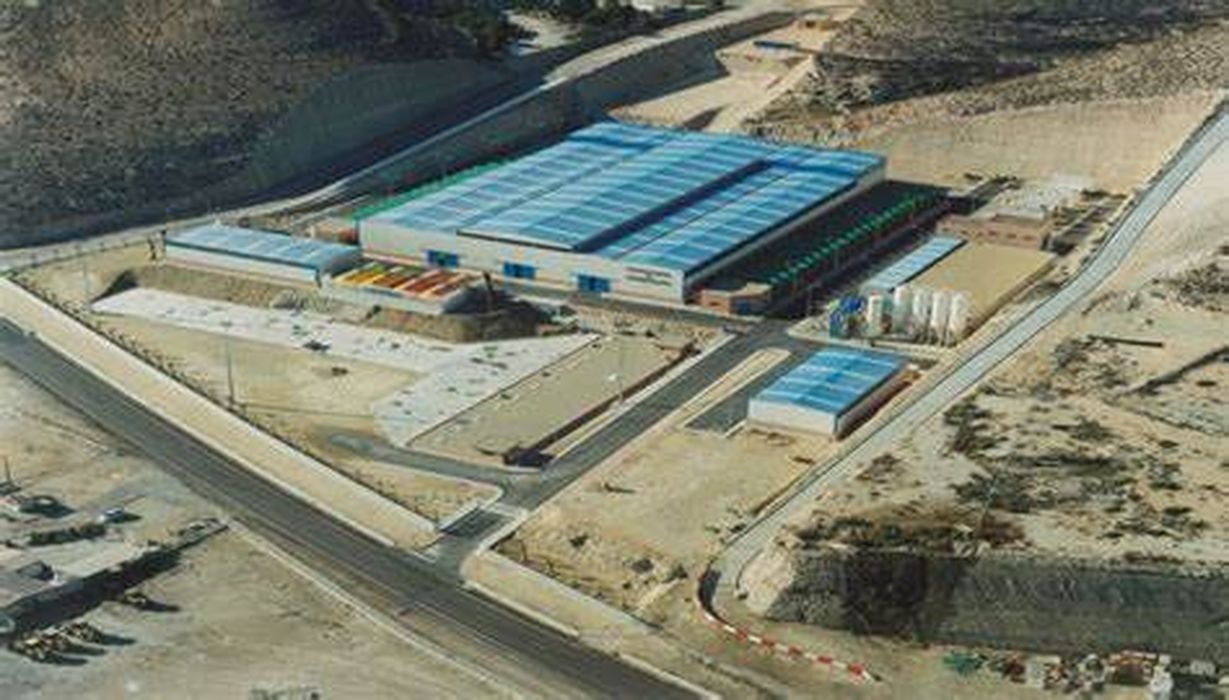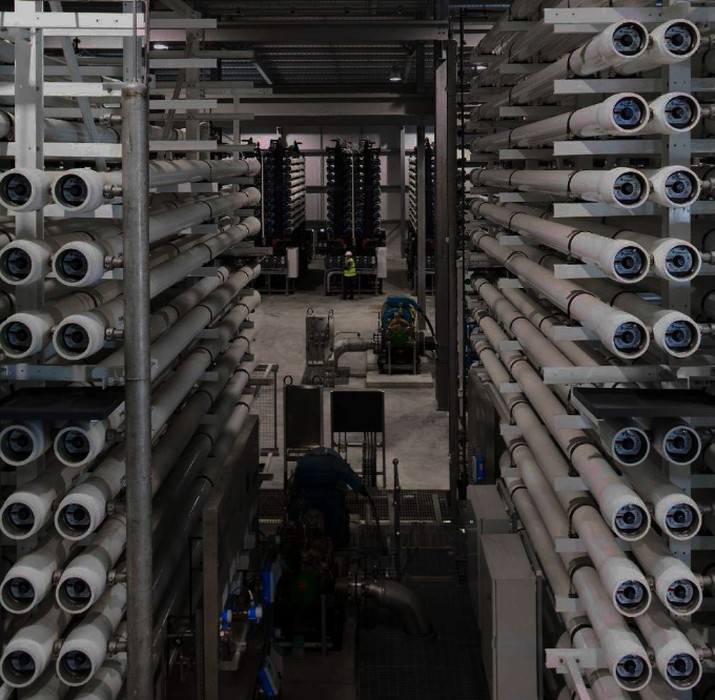
Charles R. Goulding and Preeti Sulibhavi explore how Spain, Portugal, and Greece are combating severe water scarcity through cutting-edge desalination and 3D printing technologies.
Spain and Portugal, and Greece, three of Europe’s most drought-prone countries, have long grappled with the challenge of providing sufficient clean water to their populations. All three nations are facing increasingly severe water scarcity, a problem exacerbated by climate change, population growth, and intensive agricultural practices. In response to these challenges, they have become global leaders in the development and implementation of desalination technology.
Companies like AcuaMed and Acciona have been at the forefront of this technological revolution, driving significant advancements in desalination and other water treatment methods. It is remarkable how the water scarcity problem in Europe has spurred innovation in desalination. AcuaMed’s recent expansion of its desalination plant and Acciona’s groundbreaking use of 3D printing technology, including the establishment of its 3D Printing Global Center in Dubai, are just two shining examples of this.
The Growing Water Crisis in Spain, Portugal, and Greece
Water scarcity is a critical issue in Spain, Portugal and Greece, with all three countries experiencing some of the driest conditions in Europe. In Spain, the situation is particularly dire in the southeastern regions, where prolonged droughts have led to severe water shortages. The Spanish government has had to impose restrictions on water usage in various areas, including limiting water supply to agriculture, which consumes about 70% of the nation’s water resources.
Similarly, Portugal faces its own set of challenges, with increasing temperatures and decreasing rainfall leading to the depletion of reservoirs and groundwater supplies. The scarcity of clean water is not just an environmental concern but also a socio-economic one, as it impacts agriculture, industry, and the daily lives of millions of people.
In Greece, desalination plants are finding an increasing presence on many of the Greek islands. On Greece’s Aegean Island, there are currently 57 such units operating; and, on the island of Syros, residents rely on salination entirely.
It is important to consider the fact that during travel off-season, Spain, Portugal and Greece are not densely populated countries. It is the drastic boom in residents that is catapulting these countries into water crises. Desalination may only be needed during busier times, not year-round.
Desalination: A Solution to Water Scarcity
Desalination, the process of removing salt and other impurities from seawater to produce fresh water, has emerged as a critical solution to the water scarcity problem in Spain and Portugal. Both countries have invested heavily in desalination technology, which now plays a vital role in their water supply strategies. Spain, in particular, has become one of the world’s leaders in desalination, with more than 700 desalination plants spread across the country. These plants produce approximately 1.6 billion cubic meters of water annually, supplying nearly 7% of the country’s total water needs. This figure is expected to grow as the country continues to face water shortage.

AcuaMed’s Expansion of the Torrevieja Desalination Plant
One of the key players in Spain’s desalination efforts is AcuaMed, a public company under the Ministry for Ecological Transition. AcuaMed has been instrumental in developing and operating desalination plants across Spain, particularly in regions where water scarcity is most acute.
In July 2023, AcuaMed announced the expansion of the Torrevieja desalination plant, one of the largest desalination facilities in Europe. This expansion, authorized by the Spanish government, will increase the plant’s production capacity from 80 million cubic meters to 120 million cubic meters of water per year. The project, with an estimated cost of €108 million, is part of Spain’s broader strategy to secure its water supply amid ongoing drought conditions.
The expansion of the Torrevieja plant is a significant development in Spain’s efforts to combat water scarcity. It highlights the country’s commitment to leveraging advanced technology to address its environmental challenges. The increased capacity of the plant will not only provide more clean water to the region but also help to stabilize water prices, which have been rising due to the scarcity of resources.
Acciona’s Role in Desalination and 3D Printing Innovations
Acciona, a Spanish multinational corporation, has been a pioneer in the field of water infrastructure, including desalination. The company has been involved in numerous desalination projects worldwide, providing sustainable water solutions in regions facing water scarcity. In addition to its work in Spain, Acciona has also been at the forefront of integrating innovative technologies like 3D printing into its operations, significantly enhancing the efficiency and sustainability of its projects.
Acciona’s 3D Printing Initiatives
3D printing has revolutionized various industries by enabling the production of complex structures with minimal waste. Acciona has recognized the potential of this technology in construction and water infrastructure projects. The company has been using 3D printing to create custom components for desalination plants and other infrastructure, reducing both costs and environmental impact.
One of Acciona’s most notable achievements in 3D printing is the establishment of its Global 3D Printing Center in Dubai. This facility, launched in 2023, is a state-of-the-art center dedicated to advancing 3D printing technologies for construction and infrastructure. The center is part of Acciona’s strategy to leverage innovative technologies to improve the sustainability and efficiency of its projects globally.
3D Printing in Desalination Projects
Acciona’s application of 3D printing in desalination projects is particularly noteworthy. By using 3D printing, Acciona can produce complex components that are tailored to the specific needs of each desalination plant. This capability is crucial in optimizing the performance of these plants, as it allows for the creation of parts that are more efficient and durable than those produced through traditional manufacturing methods.
For example, in Dubai, Acciona has used 3D printing to construct specialized parts for desalination plants, significantly reducing the time and cost associated with traditional construction methods. The use of 3D printing also allows for greater precision in the design and production of these components, which can lead to improved efficiency and reduced maintenance costs over the lifespan of the plant.
Moreover, 3D printing enables the use of new materials that are more resistant to the harsh conditions found in desalination plants. This innovation is particularly important in regions like the Middle East, where high temperatures and salinity levels can cause significant wear and tear on traditional infrastructure.
Acciona’s Global Impact
Acciona’s innovations in 3D printing are not limited to desalination plants. The company has been applying this technology to various infrastructure projects around the world, from bridges to building facades. In Dubai, for instance, Acciona has used 3D printing to construct parts of the Dubai Future Foundation’s headquarters, a building that has become a symbol of the city’s commitment to innovation and sustainability.
The establishment of the Global 3D Printing Center in Dubai underscores Acciona’s leadership in this field. The center serves as a hub for research and development, allowing Acciona to continue pushing the boundaries of what is possible with 3D printing technology. By investing in such facilities, Acciona is positioning itself at the forefront of a technological revolution that has the potential to transform the construction and water infrastructure industries.
The Future of Desalination and 3D Printing
The expansion of desalination capacity in Spain, coupled with the innovative use of 3D printing technology by companies like Acciona, demonstrates how technological advancements are playing a crucial role in addressing global water scarcity. As climate change continues to exacerbate water shortages in many parts of the world, the need for efficient and sustainable water solutions will only grow.
In Spain and Portugal, desalination will remain a key component of the strategy to secure water supplies. The continued investment in this technology, along with the integration of cutting-edge innovations like 3D printing, will be essential in ensuring that these countries can meet the water needs of their populations in the coming decades.
The Research & Development Tax Credit
The now permanent Research and Development (R&D) Tax Credit is available for companies developing new or improved products, processes and/or software.
3D printing can help boost a company’s R&D Tax Credits. Wages for technical employees creating, testing and revising 3D printed prototypes can be included as a percentage of eligible time spent for the R&D Tax Credit. Similarly, when used as a method of improving a process, time spent integrating 3D printing hardware and software counts as an eligible activity. Lastly, when used for modeling and preproduction, the costs of filaments consumed during the development process may also be recovered.
Whether it is used for creating and testing prototypes or for final production, 3D printing is a great indicator that R&D Credit-eligible activities are taking place. Companies implementing this technology at any point should consider taking advantage of R&D Tax Credits.
Conclusion
Europe’s struggle with water scarcity has led to significant advancements in desalination technology, with companies like AcuaMed and Acciona leading the way. The expansion of the Torrevieja desalination plant and Acciona’s pioneering use of 3D printing in infrastructure projects exemplify how these nations are leveraging technology to address environmental challenges. As the world continues to grapple with the effects of climate change, the innovations developed in Europe may serve as a blueprint for other regions facing similar issues. The synergy between desalination and 3D printing represents a promising path forward in the global effort to secure clean water for all.

